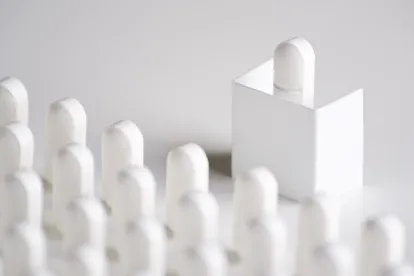The USPTO Patent Trial and Appeal Board (PTAB) has put an end to Kyle Bass’s Ampyra patent challenge, by denying institution of Inter Partes Review (IPR) proceedings. While many were hoping the PTAB would render a decision based on the “improper purpose” of the challenge, the PTAB decisions are based on one of the more substantive reasons the patent owner raised in its Preliminary Responses.
The Ampyra Patents At Issue
Kyle Bass and his Coalition for Affordable Drugs filed IPR petitions against two Orange Book-listed patents for Ampyra®: 8,663,685 and 8,007,826. (I reviewed the challenged claims in this article.) The petition against the ‘685 patent was accorded a filing date of February 26, 2015, so the PTAB’s decision on institution was due by August 26, 2015. The petition against the ‘826 patent was accorded a filing date of March 19, 2015, so the PTAB’s decision on institution was not due until September 19, 2015, but the PTAB denied institution in both proceedings on August 24, 2015.
Five Reasons To Deny Institution
The Patent Owner, Acorda Therapeutics, Inc., filed Preliminary Responses against both IPR petitions, raising at least five reasons why institution should be denied. According to Acorda:
1. The IPRs were filed for an improper purpose.
“The much-publicized filing at issue here has been widely described as part of a strategy devised by Mr. Bass to profit by using the IPR process to drive down the price of Patent Owner’s stock in which he or his investment funds held short positions. …. There can be no dispute that allowing hedge funds to use the IPR process to manipulate financial markets is inconsistent with Congressional intent and the directives given to the Office discussed above. Instituting inter partes review here will only encourage more such filings, which will burden additional patent owners, their industries and the Office.”
2. The IPR petitions do not disclose the real-party-in-interest.
“The funding of an IPR is an important factor that the Board must consider in determining whether a party is an RPI. …. Yet Petitioner, a hedge fund, does not name the investors funding the Petition.”
3. The petitions fail to establish that cited information qualifies as prior art.
The petition against the ‘685 patent cites two “posters” that allegedly were displayed at a conference prior to the critical date. As Acorda points out, the petition did not allege facts that would qualify either of the posters as a “printed publication” under the standards set forth in In re Klopfenstein, 380 F.3d 1345 (Fed. Cir. 2004).
4. The petition raises issues already considered by the Patent Office.
Under 35 U.S.C. § 325(d), “the Director may take into account whether, and reject the petition or request because, the same or substantially the same prior art or arguments previously were presented to the Office.” Acorda invokes this provision, and points out that the posters cited in the petition were made of record during prosecution of the ‘685 patent, and references disclosing the same information were cited by the Examiner during prosecution of the ‘826 patent, which is the parent of the ‘685 patent.
5. The petition fails to meet the standards for institution.
According to 35 U.S.C. § 314(a), an IPR only may be instituted if “the information presented in the [Petition and Preliminary Response] shows that there is a reasonable likelihood that the petitioner would prevail with respect to at least 1 of the claims challenged in the petition.” While some Patent Owner Preliminary Responses put forth arguments as to why the challenged claims are patentable over the asserted references, Acorda focuses on additional alleged defects in the petitions, asserting that they do not “clearly articulate the proposed grounds” for rejection, do not provide “a proper obviousness analysis,” and do not “adequately address evidence of secondary considerations.”
Cut Short By Shortcuts
The PTAB decisions are based on the third argument outlined above:
We are not persuaded that Petitioner has made a threshold showing that the posters were sufficiently publicly accessible to qualify as a “printed publication” under § 102(b). Petitioner has not demonstrated adequately that
the Hayes poster (relied upon in all grounds) or the Goodman poster, as presented in the Petition, constitute prior art to the ‘685 [or ’826] patent[s].
Where did Kyle Bass go wrong? The IPR petitions asserted that the posters were prior art because they were presented prior to the patents’ priority date and had been submitted in Information Disclosure Statements. However, Acorda convincingly argued that the fact that the posters were “presented” before the priority date did not mean that they qualified as “printed publications,” as required for an IPR reference. The PTAB also noted that citing an item in an IDS “does not constitute an admission that a cited reference is material prior art.” Because the IPR petitions did not present evidence on the Klopfensteinfactors (“[1] the length of time the display was exhibited, [2] the expertise of the target audience, [3] the existence (or lack thereof) of reasonable expectations that the material displayed would not be copied, and [4] the simplicity or ease with which the material displayed could have been copied.”), Kyle Bass lost out on his attempt to challenge the Ampyra patents.
While it is possible that Kyle Bass’s attorneys overlooked the need to qualify the posters as “printed publications,” their failure to do so begs the question whether Kyle Bass achieved his “improper purpose” when Acorda’s stocks fell after the IPR petitions were filed.




 />i
/>i

